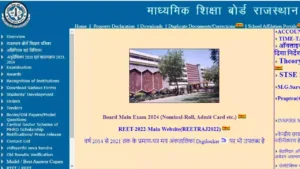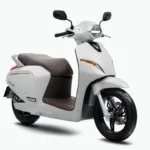The Yamaha RX 100 is more than just a motorcycle; it’s a cultural icon in India. Produced from 1985 to 1996, this two-stroke machine captured the hearts of riders with its exhilarating performance, lightweight handling, and timeless design. Even today, decades after its discontinuation, the RX 100 enjoys a passionate following and commands a premium in the used market.
A Legacy of Speed and Simplicity
The RX 100’s magic stemmed from its 98cc, air-cooled, single-cylinder engine. Though modest in displacement, it produced a surprising 11 PS of power, making it the quickest motorcycle in its class. This, combined with the bike’s lightweight frame, resulted in a thrilling power-to-weight ratio, offering an unmatched riding experience for its era.
The RX 100’s appeal went beyond just speed. Its simplicity was another key factor. The two-stroke engine was relatively easy to maintain, and the lack of complex electronics made it a favorite among enthusiasts who enjoyed tinkering and customizing their rides. The motorcycle’s robust build quality and relatively low running costs further cemented its reputation as a reliable companion on Indian roads.
A Rumored Return and Modern Challenges
In recent years, rumors of the RX 100’s return have swirled around the Indian automotive scene. While Yamaha hasn’t officially confirmed a relaunch, the possibility has ignited excitement among fans. However, a modern RX 100 would face significant challenges.
The biggest hurdle is likely to be emission regulations. The original two-stroke engine, known for its smoky exhaust, wouldn’t meet current BS6 (Bharat Stage Emission Standards) norms. To make a comeback, Yamaha would need to equip the RX 100 with a modern, fuel-efficient four-stroke engine, potentially sacrificing the characteristic two-stroke sound and power delivery that defined the original.
Another challenge lies in maintaining the RX 100’s affordability. Upgrading to a four-stroke engine, along with modern safety features like disc brakes and ABS (Anti-lock Braking System), would inevitably increase the price tag. This could alienate the budget-conscious segment that originally embraced the RX 100.
A Balancing Act Nostalgia vs Modernity
If Yamaha decides to resurrect the RX 100, it will need to strike a delicate balance between nostalgia and modernity. The motorcycle’s core identity – its lightweight handling and spirited performance – should be preserved. However, it must also comply with emission regulations and offer basic safety features to compete in the current market.
One potential solution could be a larger engine displacement, perhaps around 200cc to 250cc. This would allow for a more powerful four-stroke engine while maintaining some of the original bike’s acceleration and character. Additionally, Yamaha could offer a base model with essential features and a higher-end variant with more modern amenities.
A Legacy to Live Up To
The potential return of the RX 100 carries the weight of high expectations. The original motorcycle was a symbol of freedom and a gateway to the world of motorcycling for many. To succeed, the new RX 100 would need to capture the essence of the original while adapting to the evolving needs and regulations of the modern market.
Whether or not the RX 100 makes a comeback remains to be seen. However, one thing is certain: the legacy of this legendary motorcycle lives on in the hearts of enthusiasts, a testament to its enduring appeal and the special place it holds in Indian automotive history.













